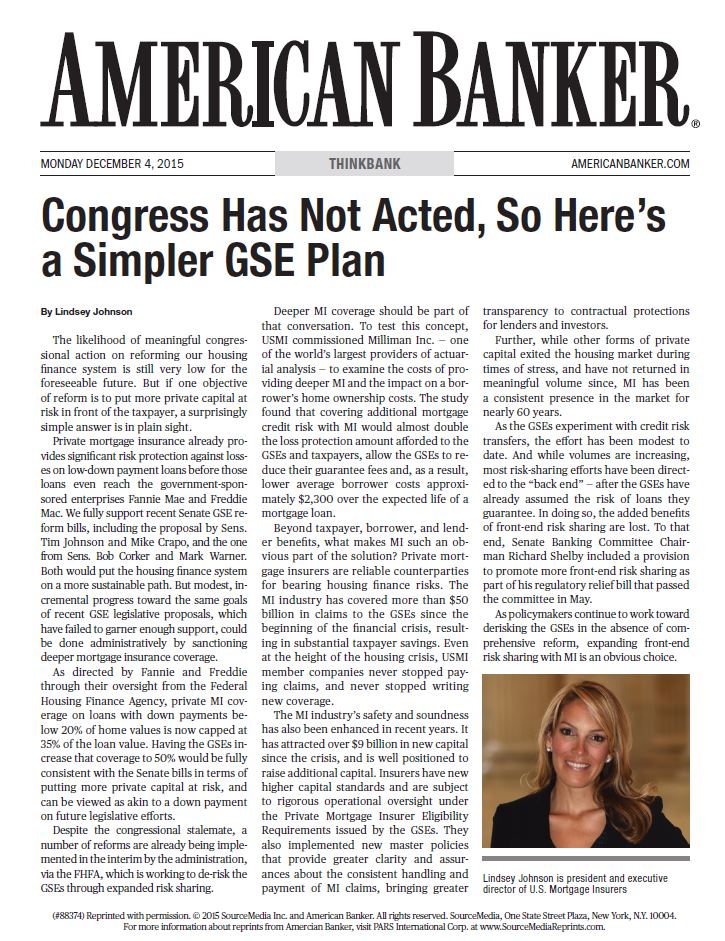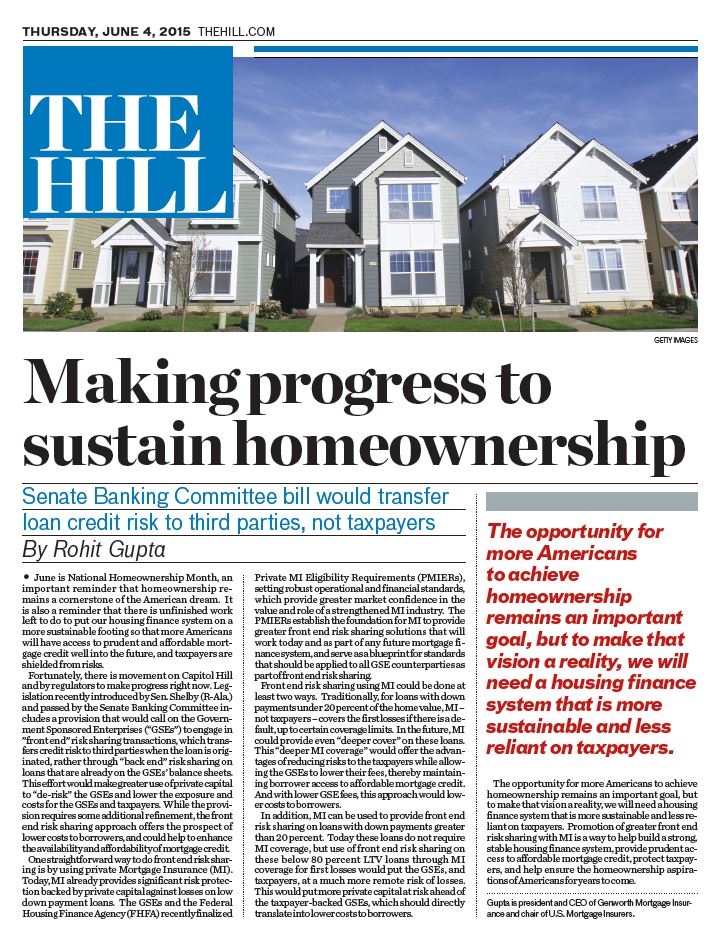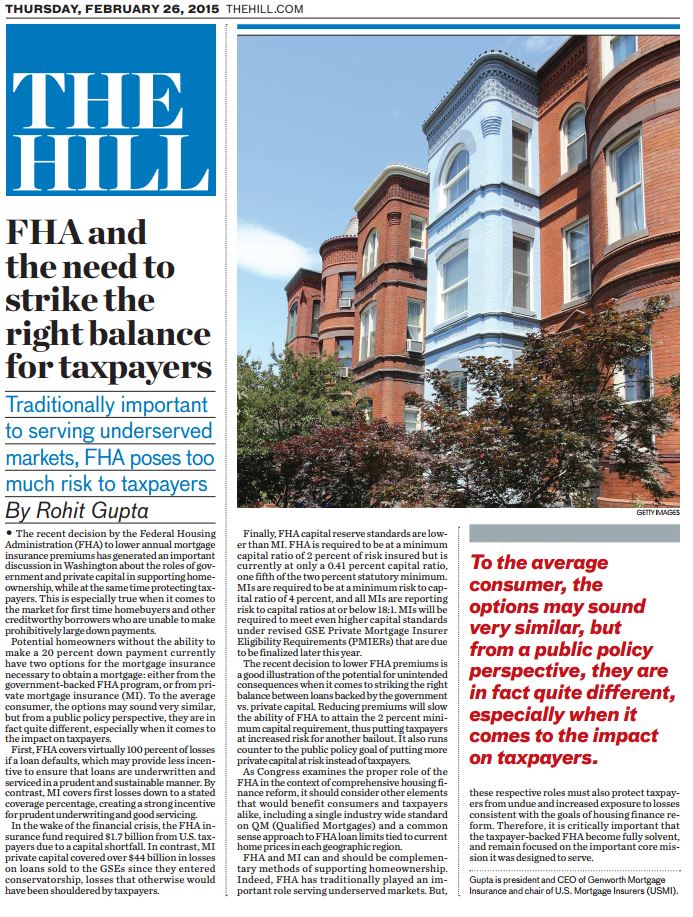By: Lindsey Johnson
Today, the place you call home matters more than ever. Unfortunately, many Americans continue to believe homeownership is out of reach because they think a 20 percent down payment is needed to qualify for a mortgage.
A recent report by the private mortgage insurance (MI) industry finds that it could take a family earning the national median income over 20 years to save for a 20 percent down payment. But the wait decreases by 67 percent when a five percent down payment is the goal. Fortunately, millions of homebuyers each year qualify for home financing with low down payments.
Given the current economic environment due to COVID-19 and the desire of many people to keep more cash on-hand, low down payment loans are more important than ever. Low down payment mortgages with private mortgage insurance have proven to be a time-tested means for Americans to access affordable homeownership sooner while still providing credit risk protection and stability to the U.S. housing system. It is no wonder why more than 33 million homeowners have used this type of home financing and why its use is on the rise.
The report finds that in 2019, the number of low down payment loans backed by private MI increased 22.9 percent. Over 1.3 million home loans were purchased or refinanced with private MI, up from just over 1 million in 2018. Nearly 60 percent of the borrowers of these loans were first-time homebuyers and 40 percent had annual incomes of less than $75,000.
Why have millions turned to this type home financing?
Let us first take a closer look at a borrower who earns the national median income of $63,179. To save 20 percent, plus closing costs, for a $274,600 home, the median sales price for a single-family home last year, they would need to bring more than $63,000 in cash to the table. It could take up to 21 years to save up this amount based on the national savings rate dedicated towards a mortgage. But if this borrower qualifies using private MI on a five percent down payment mortgage, their wait time drops to just seven years. This type of home financing offers Americans a chance to secure home financing much sooner than previously believed.
Why is 20% the “magic number”?
Data demonstrates that borrowers who make larger down payments are less likely to default on their mortgages than borrowers with lower down payments. Therefore, lenders traditionally require a 20 percent down payment to offer mortgage financing to a borrower. This is where mortgage insurance steps in, providing credit enhancement for the borrower with a lower down payment, and insuring the loan for the lender in the event the borrower stops making their payments. Once the borrower builds 20 percent equity in their mortgage, the insurance can be cancelled, thus lowering the monthly payment. Private MI also helps Americans buy a home without necessarily breaking the bank.
Private mortgage insurance is offered on so-called conventional loans that are backed by the government sponsored enterprises (GSEs), Fannie Mae and Freddie Mac. When there is private MI on a loan, the risk protection provided to lenders for making a low down payment mortgage possible is extended to the GSEs too. In the event of a default, the private mortgage insurance stands to cover losses first, meaning private MI also protects taxpayers.
Supporting the American Dream
As the report demonstrates, private mortgage insurers’ role in the low down payment market significantly increased over the last five years. Between 2015 and 2019, private mortgage insurers’ market share in the low down payment lending sector increased from 34.8 percent of the insured market in 2015 to 44.7 percent in 2019, helping millions of Americans qualify for home financing.
Private MI offers a reliable path to the American dream of owning a home. Since 1957, private MI has helped more than 33 million Americans become homeowners while protecting taxpayers. And right now, more than ever, we are even more aware of the benefits of owning a home—from building wealth to creating stability to the importance of having a safe place to call your own.
Lindsey Johnson is the president of the U.S. Mortgage Insurers (USMI), the association representing the nation’s leading private mortgage insurance companies.
###
Mortgage Professional America originally published USMI President Lindsey Johnson’s opinion piece, “Low down payments backed by mortgage insurance more important than ever” on August 10, 2020.














